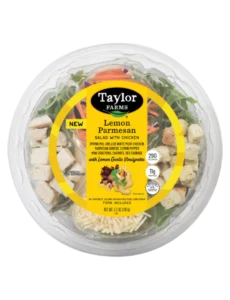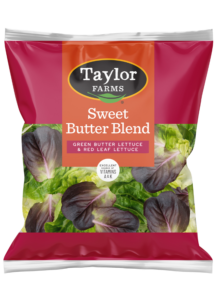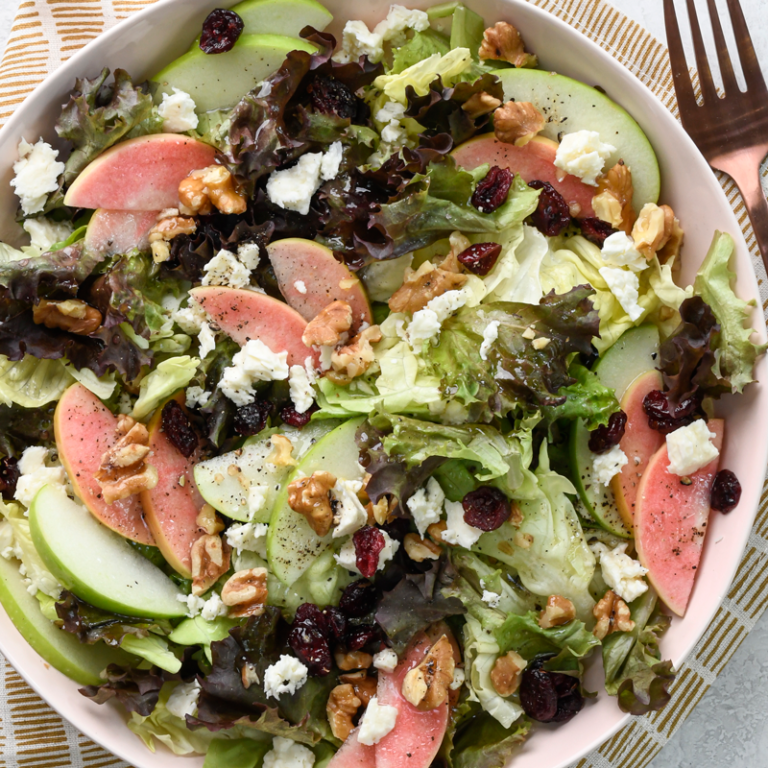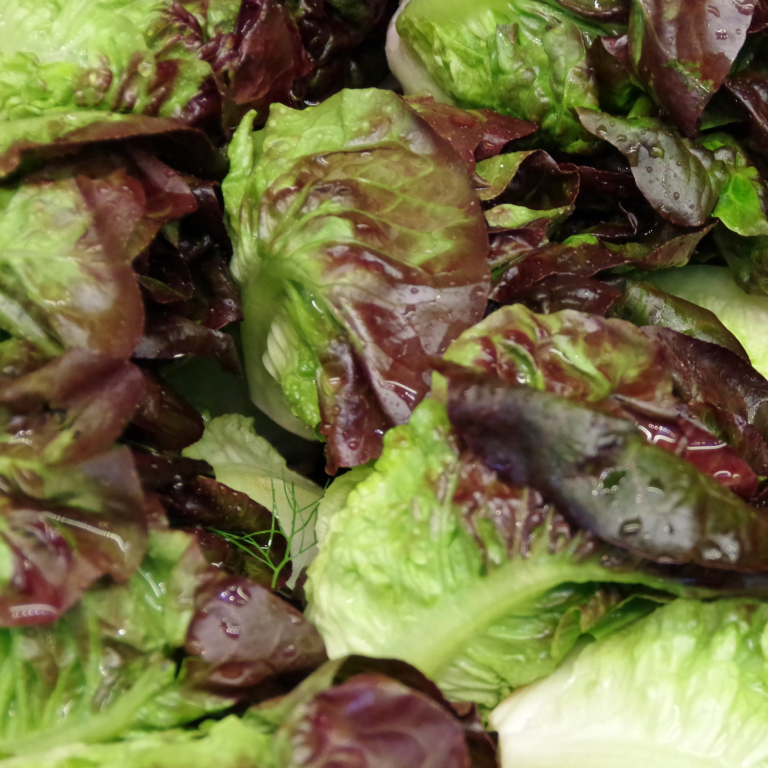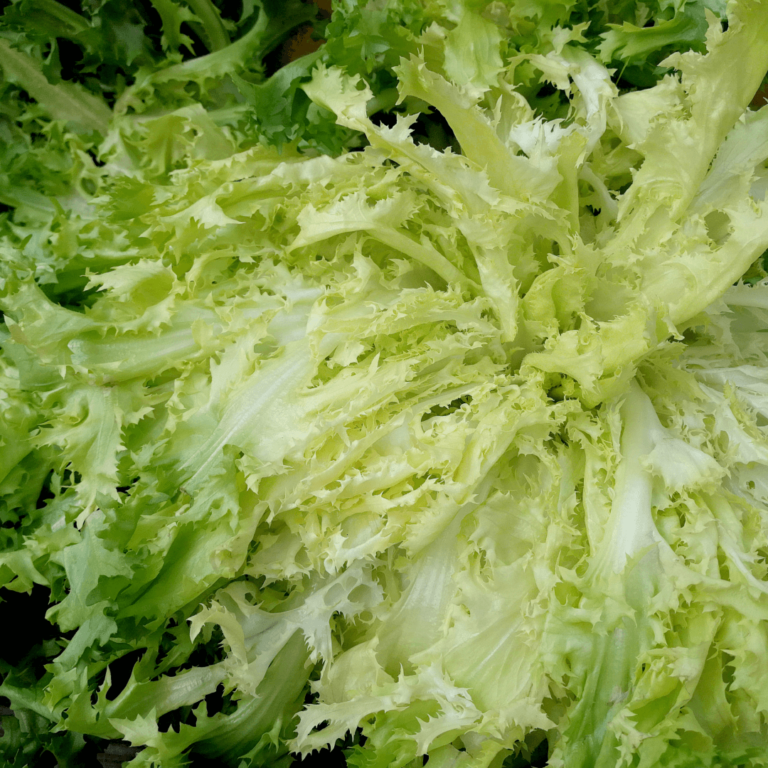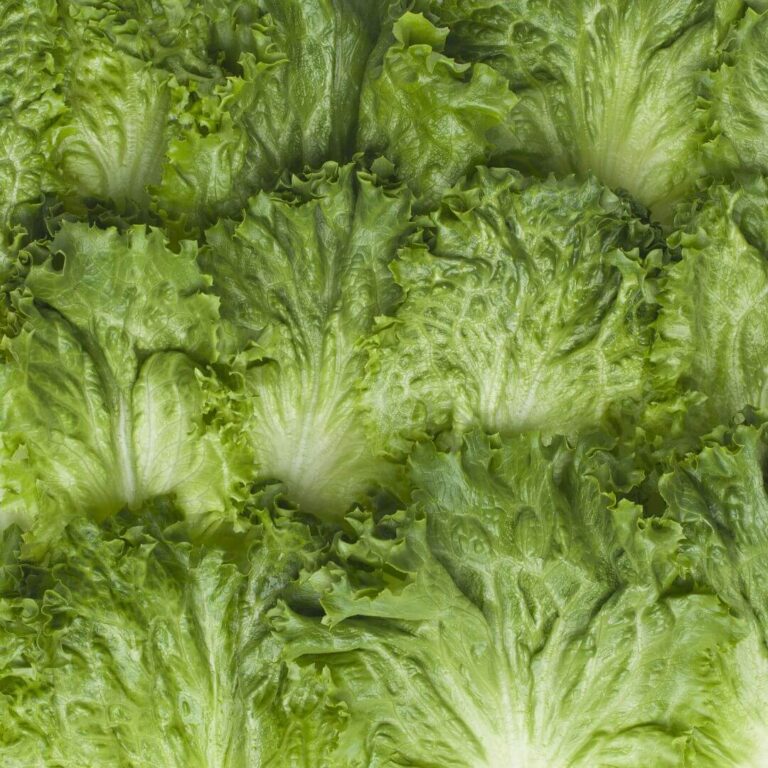Butter Lettuce at a Glance
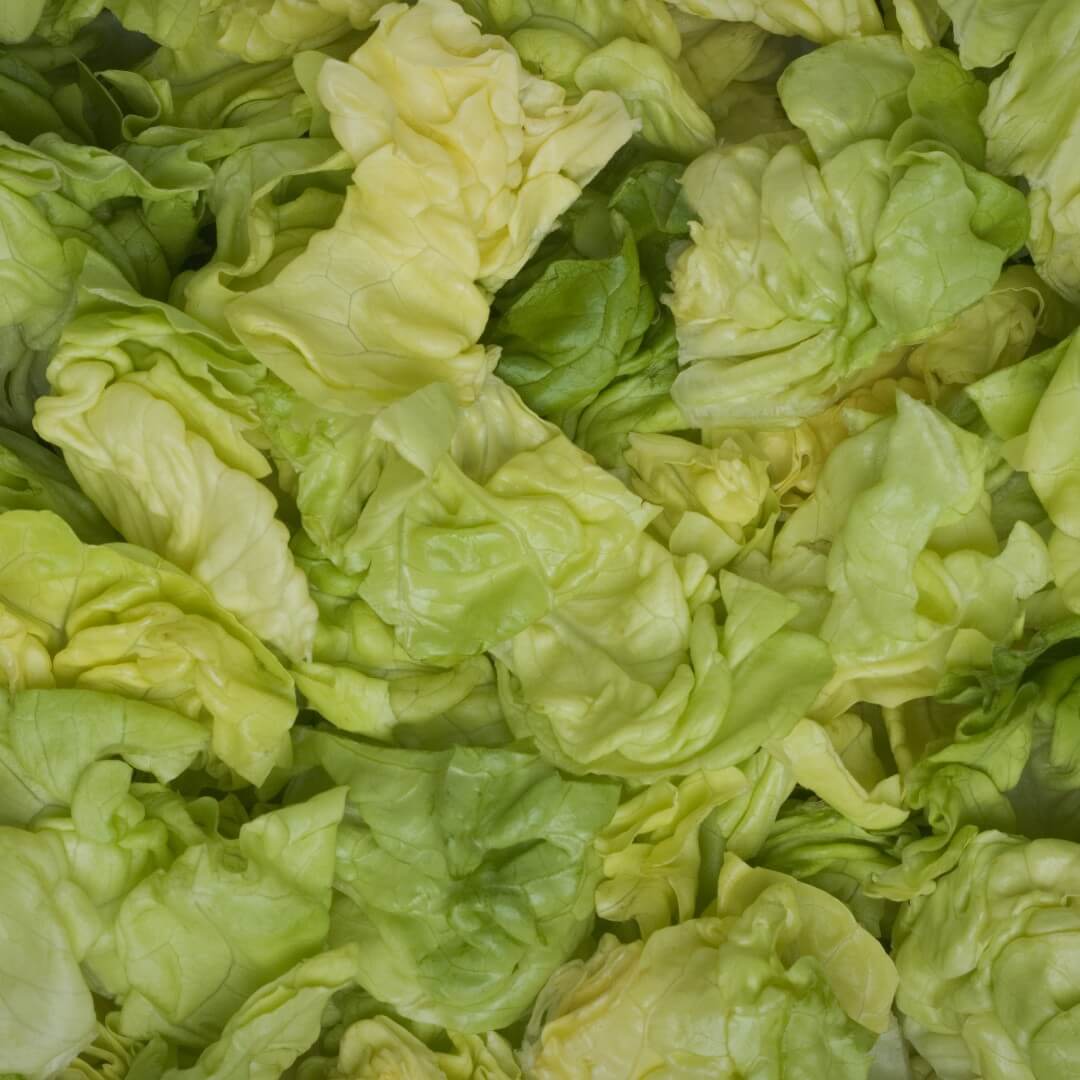
Scientific Name: Lactuca sativa var. capitata
Family: Asteraceae
In season: Spring and early summer, but available year-round
Varieties: Butterhead lettuce, Boston lettuce
Great for: Salads, wraps, sandwiches, light appetizers
Butter Lettuce Nutrition
Vitamin A
Vitamin K
5 Calories
Common Questions about Butter Lettuce
Raw butter lettuce offers a luxurious, buttery-smooth texture and a mildly earthy, subtly sweet flavor. Its tender leaves provide a delicate crunch that complements salads and sandwiches, while its mild taste makes it a perfect pairing with a variety of dressings, vinaigrettes, and toppings.
When cooked, butter lettuce takes on a different character. Its leaves will wilt gently, transforming from crisp to tender, much like spinach. The flavor becomes slightly sweeter and more concentrated, with a mild bitterness emerging as well. When sautéed or braised briefly, it adds a touch of elegance to warm dishes. Overall, the delicate nature of cooked butter lettuce allows it to blend well with various ingredients, enhancing the overall taste and texture of the final creation.
Growing butter lettuce
Typically, butter lettuce is ready to be harvested when the leaves have grown to around 4 to 6 inches in diameter. The outer leaves will be lush, tender, and vibrant in color. Gently squeeze the leaves; they should feel supple and pliable, not tough or overly rigid. You can harvest butter lettuce by cutting the outer leaves at their base, allowing the inner leaves to continue growing for any future harvests.
Purchased butter lettuce
When purchasing fresh butter lettuce, look for crisp leaves with no signs of wilting or discoloration. The head should feel dense and heavy for its size. The base of the lettuce should not be slimy or discolored. Butter lettuce is highly perishable, so choose heads with vibrant, healthy leaves and use within a few days of purchase for the best quality and taste.
Start by gently washing and drying the leaves, removing excess moisture to prevent rot. Place the lettuce in a clean, dry paper towel and put it in a plastic bag. Leave the bag slightly open to allow for airflow. Store this bundle in the vegetable crisper drawer of your refrigerator. Alternatively, you can use an airtight container lined with paper towels. Consume within a week for optimal quality.
Remember to not wash the lettuce until you’re ready to use it, as moisture speeds up decay.
Freezing butter lettuce is not recommended—its high water content and delicate texture make it ill-suited for freezing.
Butter lettuce is commonly grown in temperate zones where temperatures are mild and consistent. California’s fertile growing regions, such as the Salinas Valley, are significant hubs for butter lettuce production due to the optimal climate and soil conditions. Coastal areas in other states and parts of Europe and Asia also cultivate butter lettuce. Its preference for cooler temperatures and ability to withstand light frost makes it suitable for both spring and fall planting.

How to cook & serve butter lettuce
Butter lettuce is often enjoyed raw, but it can also lend its unique texture and flavor to various cooked dishes.
Sautéed or Wilted: Gently sautéing or wilting butter lettuce with a touch of olive oil and garlic brings out its sweetness while maintaining a delicate crunch. It’s an excellent addition to warm salads or as a side dish for grilled proteins like chicken or fish.
Stir-Fried: Incorporating butter lettuce into stir-fries adds a slightly crisp element to the vegetables and meats in the dish. Its mild flavor complements bold sauces and spices.
Soups: Adding chopped butter lettuce to soups toward the end of cooking offers the dish a gentle crunch, mild flavor, and a pop of color. It works particularly well in clear broths and lighter soups.
Wraps: The pliable nature of butter lettuce makes it great for using as a wrap for fillings like grilled shrimp, chicken, or tofu. The leaves provide a refreshing and low-carb alternative to traditional wraps.
Need a few more ideas? Serve cooked butter lettuce alongside grains like quinoa or rice, incorporate it into pasta dishes, or use it to add depth to noodle bowls.


